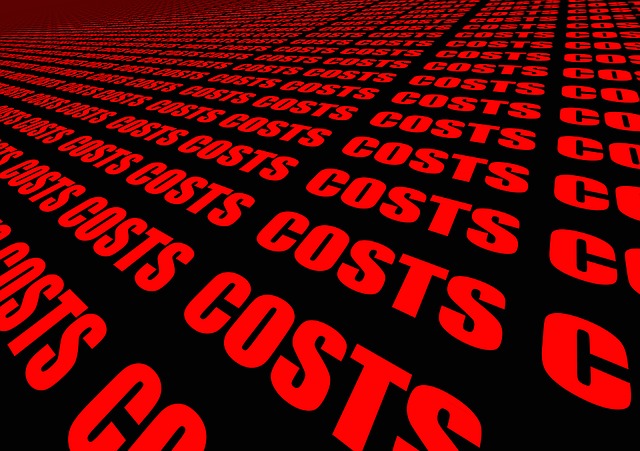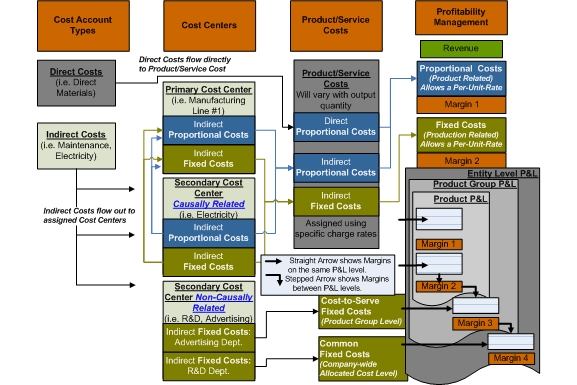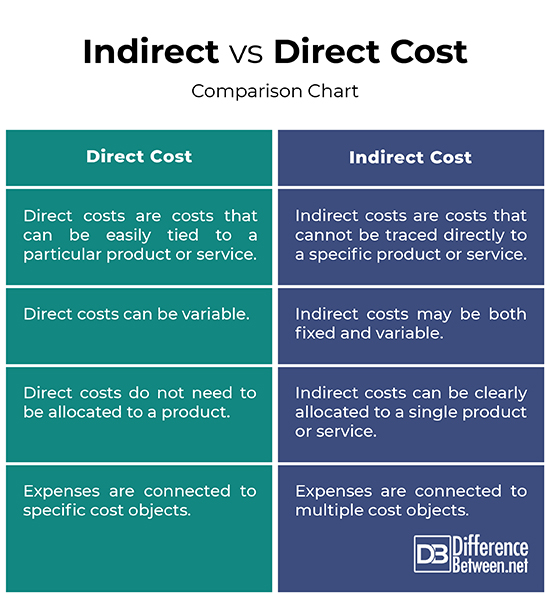Different Between Indirect and Direct Costs
When a product is manufactured, certain costs can be easily traced back to the individual products that you make. These expensed are called direct costs. Certain costs, on the other hand, cannot be traced so easily back to an individual product. These expenses are called indirect costs. Both are important for running a business and a better understanding of the two is crucial for tracking business expenses.

What is a Direct Cost?
Direct cost, as the name suggests, is a price that can be directly connected to the manufacturing or production of certain goods or services. Direct costs can be easily traced back to the production of a specific product or a service being offered. Material and labor costs are good examples of direct costs.
Let’s say you manufacture notebooks. To make notebooks, you need white paper sheets, cover pages, ink, industrial gum, and binding materials. These are all considered direct material costs, because they can be directly tied to that specific product. These are raw materials that are mandatorily required to manufacture notebooks. Direct labor is the cost of paying workers to make these products. If one worker takes three hours to make a product at $12 per hour, then the direct labor cost equals $36.

What is an Indirect Cost?
Consider the same example of notebooks. You know the direct costs involved in manufacturing a notebook. But direct costs are not the only expenses involved. There are other costs involved that cannot be directly tied back to the production of notebooks. These include supplies, utilities, equipment rental, electricity and telephone, and so on. These overhead costs which extend beyond the expenses you incur manufacturing a certain product, or in this case notebooks, are called indirect costs.
Unlike direct costs, they cannot be traced back to specific cost objects. It represents the cost of doing business that is not readily identified with a particular product or service. So, instead they have to be allocated. Indirect costs may be either fixed or variable. You typically allocate costs by assigning a cost per unit, which attaches all of the indirect costs to your products or services.
Difference between Indirect and Direct Costs
Meaning
– Direct costs are costs can be easily traced back to the production of a specific product or a service being offered. Direct costs fall into two categories: direct materials and direct labor. Direct materials are raw materials that can be tied directly to the manufactured product. Direct labor is the cost of paying the workers to make the products. Indirect costs, on the other hand, are costs which cannot be easily tied to individual manufactured products. Indirect costs are sometimes referred to as overhead costs.
Expenses
– Direct costs are expenses involved with manufacturing a product and include manufacturing supplies, raw materials, equipment costs, labor costs, and other production costs. Materials and labor costs are good examples of direct costs. Indirect costs are expenses that do not directly related to the manufacturing of the product. Indirect costs include utilities, office supplies, electricity, telephone, property and other taxes, insurance, and depreciation of factories and equipment.
Example
– Say you manufacture cotton gloves, for which you need cotton, yarn and leather. The materials can be traced directly to the gloves; for example, you can take a glove apart and see exactly what materials were used to make a glove. In this case, cotton, yarn and leather are considered direct material costs, because they can be directly connected to the manufacturing of the gloves. But not all costs are direct. Assume you lease the building where you make the gloves. You obviously can’t connect the cost of the lease directly to any particular pair of gloves. This comes in indirect costs.
Indirect vs. Direct Cost: Comparison Chart

Summary
Both are important cost accounting terms and can be confusing sometimes. Direct costs are costs that you can easily trace to a particular product or service. Raw materials and labor costs are the most common examples of direct costs. Indirect costs, on the other hand, are costs that cannot be traced directly to a specific product or service. Instead, indirect costs are allocated and they are also referred to as overhead costs. You typically allocate costs by assigning a cost per unit. The per unit rate links all of the indirect costs to your products.
What are the examples of direct and indirect cost?
Raw materials and labor costs are good examples of direct costs. Indirect costs include utilities, office supplies, electricity, telephone, property and other taxes, insurance, and depreciation of factories and equipment.
What is the difference between direct cost and variable cost?
Direct costs and variable costs are both similar in nature and they both are involved in production. Direct costs are often variable costs, but they can also be fixed. They can be directly tied to a product or service. Variable cost, on the other hand, may vary depending on the level of production output.
How is direct cost calculated?
Direct cost is the sum total of the direct materials costs involved in the manufacturing of a particular product and the direct labor costs.
Is packaging a direct or indirect cost?
The packaging costs come under the direct variable cost category because these costs can vary depending on the number of products manufactured.
- Difference Between Caucus and Primary - June 18, 2024
- Difference Between PPO and POS - May 30, 2024
- Difference Between RFID and NFC - May 28, 2024
Search DifferenceBetween.net :
Leave a Response
References :
[0]Holtzman, Mark P. Managerial Accounting For Dummies. New Jersey, United States: John Wiley & Sons, 2013. Print
[1]Boyd, Kenneth W. Cost Accounting For Dummies. New Jersey, United States: John Wiley & Sons, 2013. Print
[2]Image credit: https://pixabay.com/illustrations/cost-finance-money-business-1174938/
[3]Image credit: https://commons.wikimedia.org/wiki/File:GPK_Marginal_Cost_Flow.jpg
